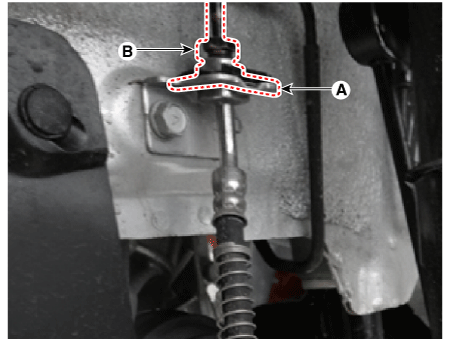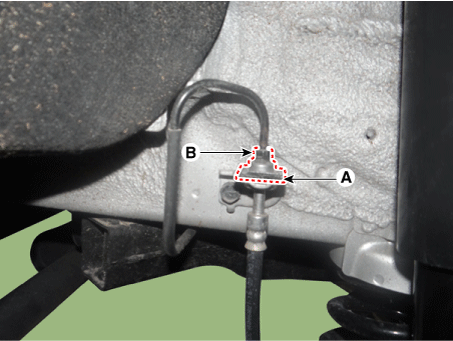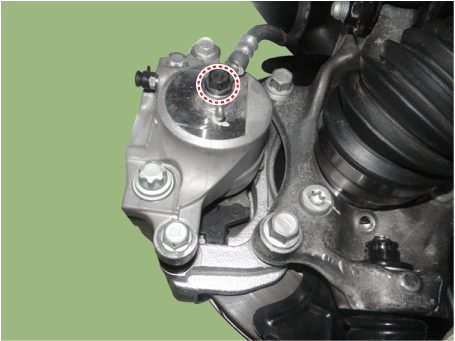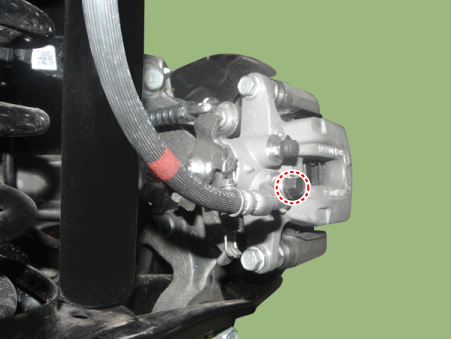Kia Niro: AHB(Active Hydraulic Boost) System / Brake Line Repair procedures
| Removal |
| 1. |
Disconnect the brake fluid level switch connector, and remove the reservoir cap. |
| 2. |
Remove the brake fluid from the master cylinder reservoir with a syringe.
|
| 3. |
Remove the wheel & tire. |
| 4. |
Remove the brake hose clip (A). |
| 5. |
Loosen the tube flare nut (B) and then remove the tube.
[Front]
[Rear]
|
| 6. |
Disconnect the brake hose from the brake caliper by loosening the bolt.
[Front]
[Rear]
|
| Inspection |
| 1. |
Check the brake tubes for cracks, crimps and corrosion. |
| 2. |
Check the brake hoses for cracks, damage and fluid leakage. |
| 3. |
Check the brake tube flare nuts for damage and fluid leakage. |
| 4. |
Check brake hose mounting bracket for crack or deformation. |
| Installation |
| 1. |
Installation is the reverse of removal. |
| 2. |
After filling the brake fluid in the reservoir, perform the air bleed. (Refer to the Brake system - "Brake Bleeding Procedure") |
| 3. |
Check the spilled brake oil. |
 Brake Line Components and components location
Brake Line Components and components location
Components
...
 Brake Pedal Components and components location
Brake Pedal Components and components location
Components
1. Pedal stroke sensor
2. Stop lamp switch
3. Brake pedal arm
...
Other information:
Kia Niro 2017 (DE HEV) Service Manual: Repair procedures
Replacement
Use a plastic panel removal tool to remove interior trim pieces without
marring the surface.
1.
Open the fuel filler door and then filler door cap.
2.
...
Kia Niro 2017 (DE HEV) Service Manual: Thermostat Repair procedures
Removal and Installation
Disassembly of the thermostat may have an adverse effect, causing deteriorated
cooling efficiency. Do not remove the thermostat, even if the engine tends
to overheat.
...





